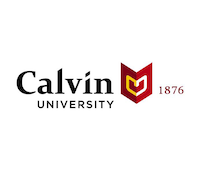Below is a summary of the abstract you submitted. Presenting author(s) is shown in bold.
If any changes need to be made, you can modify the abstract or change the authors.
You can also download a .docx version of this abstract.
If there are any problems, please email Dan at dar78@pitt.edu and he'll take care of them!
This abstract was last modified on April 1, 2025 at 9:21 a.m..

Soil samples were collected by Calvin University students from the greater Grand Rapids area. Direct plating and enrichment techniques were used to isolate 15 bacteriophages using the bacteria host Rhodococcus equi NRRL B-16538, followed by 3 rounds of purification. Transmission electron microscopy revealed all as siphoviridae morphology. Unique restriction digest patterns were used to identify phages for sequencing. Two of these are currently awaiting sequencing at North Carolina State, while Nova53 was sequenced at the University of Pittsburgh using Illumina technology. Nova53 was collected at 42.930479 N, 85.58862 W, and isolated through enrichment. Nova53 is in cluster CG which contains two other Calvin isolated phages, Dorin and Francesca. Cluster CG phages are similar in length and G+C content. Nova53 is 137941 bp, 48.5% G+C, and contains 253 protein-coding genes and 33 tRNAs. While protein-coding gene content in the right half of the Nova 53 genome differs significantly from Dorin and Francesca, tRNA presence and order are strongly conserved. Our annotation identified all expected genes; however, integrase was not found, suggesting a lytic lifecycle consistent with clear plaque morphology. We plan to investigate in the lab whether Nova53, Dorin, and Francesca can make lysogens in order to determine the life cycle of Cluster CG.
